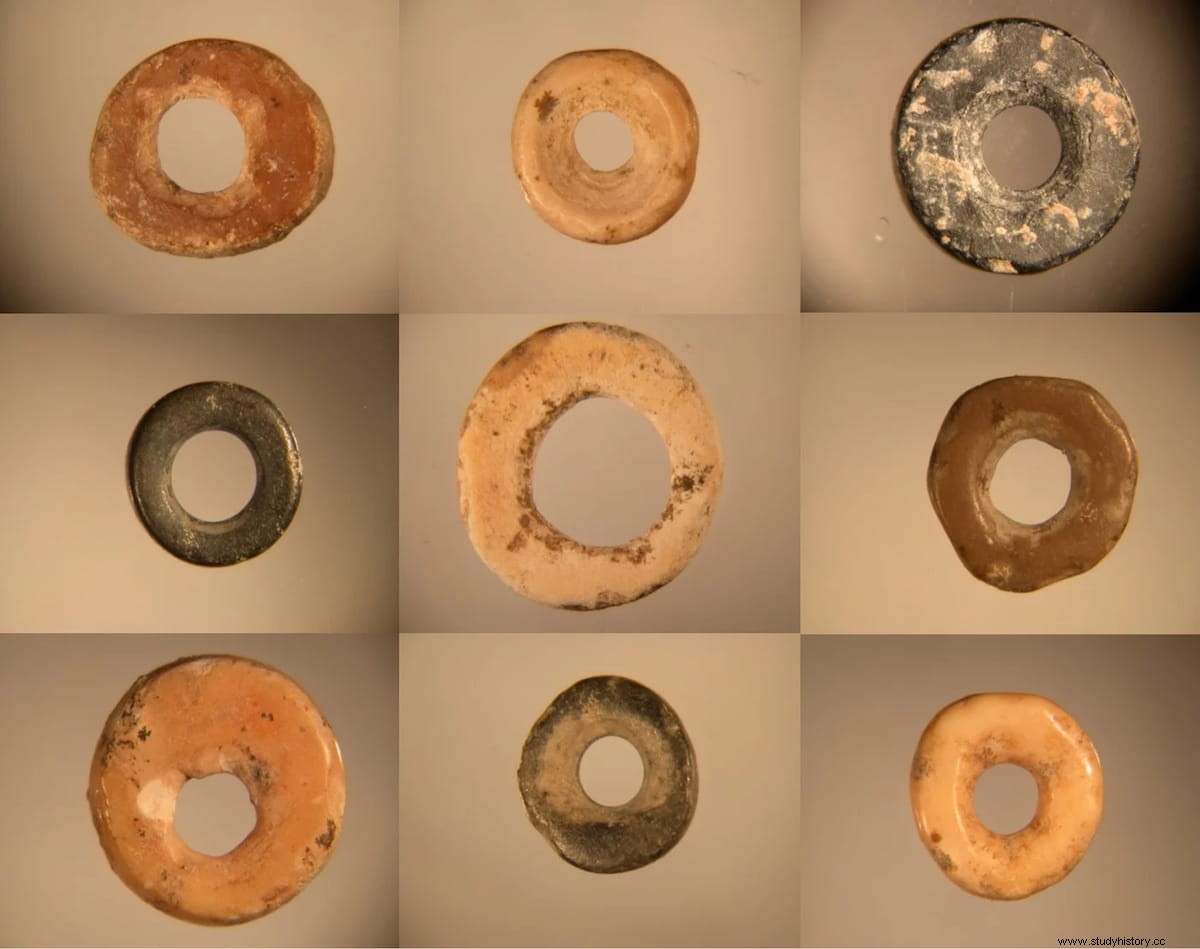Human beings are social creatures, but little is known about when, how and why different populations related in the past. Answering these questions is crucial to interpreting the biological and cultural diversity we see in today's human populations. DNA is a powerful tool for studying genetic interactions between populations, but it cannot address the cultural exchanges within these ancient encounters. Now scientists at the Max Planck Institute for the Science of Human History have turned to an unexpected source of information - ostrich eggshell beads - to shed light on ancient social networks. In a study published in Nature , Drs Jennifer Miller and Yiming Wang report 50,000 years of population connection and isolation, driven by changing rainfall patterns, in southern and eastern Africa.
Ostrich eggshell beads are ideal artifacts for understanding ancient social relationships. They are the world's oldest entirely manufactured ornaments, meaning that rather than relying on an item's natural size or shape, humans completely transformed the shells to produce beads. This extensive transformation creates wide possibilities for style variation. Since different cultures produced beads of different styles, prehistoric accessories provide researchers with a way to trace cultural connections.
It's like following a trail of breadcrumbs says Miller, lead author of the study. Trinkets are clues, scattered through time and space, waiting to be discovered .

To look for hints of population connectivity, Miller and Wang assembled the largest database of ostrich eggshell beads. It includes data from more than 1,500 individual beads unearthed at 31 locations in southern and eastern Africa, spanning the last 50,000 years. Collecting this data was a painstakingly slow process that took more than a decade.
By comparing bead characteristics, such as overall diameter, opening diameter, and shell thickness, Miller and Wang found that between 50,000 and 33,000 years ago, nearly identical beads were used by people in eastern and southern Africa. The finding suggests that a long-distance social network spanning more than 3,000 kilometers once connected the inhabitants of the two regions.
The result is surprising, but the pattern is clear says Wang, a co-author of the study. Over the 50,000 years we examined, this is the only time period in which the characteristics of the beads are the same .

This 50-33,000 year old east-south connection is the oldest social network ever identified, and it coincides with a particularly wet period in East Africa. However, the signs of the regional network disappear 33,000 years ago, probably caused by a major change in the global climate. Around the same time the social web breaks, eastern Africa experienced a drastic reduction in rainfall as the tropical rain belt moved south. This increased rainfall in the large area connecting eastern and southern Africa (the Zambezi River Basin), periodically flooding riverbanks, and perhaps creating a geographic barrier that disrupted regional social networks.
Through this combination of paleoenvironmental barriers, climate models, and archaeological data, we can see the connection between climate change and cultural behavior says Wang.
Taken together, the results of this work document a 50,000-year history of human connections and the dramatic climate changes that separated peoples. The data even provides new insight into varying social strategies between eastern and southern Africa by documenting different account usage trajectories over time. These regional responses highlight the flexibility of human behavior and show that there is more than one path to success for our species.
These little beads have the power to reveal big stories about our past Miller says. We encourage other researchers to build on this database and further explore evidence of cultural connection in new regions .
